Clinical Outcomes and Prognosis Analysis of Younger Bladder Cancer Patients
- PMID: 35200552
- PMCID: PMC8870851
- DOI: 10.3390/curroncol29020052
Clinical Outcomes and Prognosis Analysis of Younger Bladder Cancer Patients
Abstract
Background: Generally, little is known about prognostic factors in bladder cancer patients under 40 years of age. We therefore performed a retrospective study to identify prognostic factors in these younger bladder cancer patients.
Methods: We collected clinicopathological data on bladder cancer patients ≤40 years old diagnosed between 1975 and 2018 from the Surveillance, Epidemiology, and End Results (SEER) database. Survival curves were generated using the Kaplan-Meier method, and the differences between groups were analyzed using the log-rank test. Univariate and multivariate Cox hazards regression analyses were performed to define hazard ratios (HRs) for cancer-specific survival (CSS).
Results: There were statistical differences in race, histological type, cancer stage, tumor size, and surgery treatment groups between overall survival and CSS. Only tumor size and cancer stage were significant independent prognostic risk factors in younger bladder cancer patients for the prediction of CSS.
Conclusion: Tumors greater than 30 mm in size and a more advanced stage of bladder cancer were indicative of a poor prognosis in bladder cancer patients ≤40 years old, and long-term follow-up is suggested.
Keywords: 40 years; bladder cancer; prognostic factors; survival.
Conflict of interest statement
The authors declare no conflict of interest.
Figures
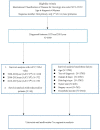
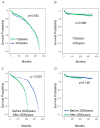
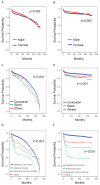
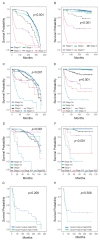
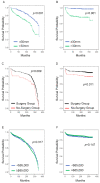
Similar articles
-
Prognostic significance of bladder neck involvement in non-muscle-invasive bladder cancer: A SEER database analysis with 19,919 patients.Cancer Med. 2021 Oct;10(19):6868-6880. doi: 10.1002/cam4.4219. Epub 2021 Aug 23. Cancer Med. 2021. PMID: 34423585 Free PMC article.
-
A Clinical Model of Bone Angiosarcoma Patients: A Population-based Analysis of Epidemiology, Prognosis, and Treatment.Orthop Surg. 2020 Dec;12(6):1652-1662. doi: 10.1111/os.12803. Epub 2020 Sep 10. Orthop Surg. 2020. PMID: 32914587 Free PMC article.
-
Smaller tumor size is associated with poor survival in stage II colon cancer: An analysis of 7,719 patients in the SEER database.Int J Surg. 2016 Sep;33 Pt A:157-63. doi: 10.1016/j.ijsu.2016.07.073. Epub 2016 Aug 2. Int J Surg. 2016. PMID: 27491969
-
Development and validation of a prognostic nomogram for predicting overall survival in patients with primary bladder sarcoma: a SEER-based retrospective study.BMC Urol. 2021 Nov 25;21(1):162. doi: 10.1186/s12894-021-00929-x. BMC Urol. 2021. PMID: 34823525 Free PMC article.
-
The incidence and survival outcomes of patients with primary cardiac lymphoma: A SEER-based analysis.Hematol Oncol. 2020 Aug;38(3):334-343. doi: 10.1002/hon.2741. Epub 2020 Apr 29. Hematol Oncol. 2020. PMID: 32311106
Cited by
-
Changing Clinical Spectrum and Disease Progression in Young Patients With Bladder Cancer: A Retrospective Observational Study.Cureus. 2025 Apr 18;17(4):e82516. doi: 10.7759/cureus.82516. eCollection 2025 Apr. Cureus. 2025. PMID: 40385797 Free PMC article.
-
The Added-value of Staging 18F-FDG PET/CT in the Prediction of Overall Survival in the Patients with Bladder Cancer.Mol Imaging Radionucl Ther. 2024 Feb 22;33(1):11-18. doi: 10.4274/mirt.galenos.2023.65002. Mol Imaging Radionucl Ther. 2024. PMID: 38390706 Free PMC article.
-
The Role of AHCY Expression in Bladder Urothelial Carcinoma: A Bioinformatics and Experimental Analysis.Cancer Manag Res. 2025 Mar 21;17:661-673. doi: 10.2147/CMAR.S491044. eCollection 2025. Cancer Manag Res. 2025. PMID: 40144861 Free PMC article.
-
Competitive Risk Model for Specific Mortality Prediction in Patients with Bladder Cancer: A Population-Based Cohort Study with Machine Learning.J Oncol. 2022 Aug 25;2022:9577904. doi: 10.1155/2022/9577904. eCollection 2022. J Oncol. 2022. PMID: 36059803 Free PMC article.
References
-
- Cancer Today. [(accessed on 25 September 2021)]. Available online: https://gco.iarc.fr/today/online-analysis-tble?v=2020&mode=cancer&mode_p....
-
- Rouprêt M., Babjuk M., Burger M., Capoun O., Cohen D., Compérat E.M., Cowan N.C., Dominguez-Escrig J.L., Gontero P., Mostafid A.H., et al. European Association of Urology Guidelines on Upper Urinary Tract Urothelial Carcinoma: 2020 Update. Eur. Urol. 2020;79:62–79. doi: 10.1016/j.eururo.2020.05.042. - DOI - PubMed
-
- Abudurexiti M., Xie H., Jia Z., Zhu Y., Zhu Y., Shi G., Zhang H., Dai B., Wan F., Shen Y., et al. Development and External Validation of a Novel 12-Gene Signature for Prediction of Overall Survival in Muscle-Invasive Bladder Cancer. Front. Oncol. 2019;9:856. doi: 10.3389/fonc.2019.00856. - DOI - PMC - PubMed
-
- Compérat E., Larré S., Roupret M., Neuzillet Y., Pignot G., Quintens H., Houéde N., Roy C., Durand X., Varinot J., et al. Clinicopathological Characteristics of Urothelial Bladder Cancer in Patients Less Than 40 Years Old. Virchows Arch. 2015;466:589–594. doi: 10.1007/s00428-015-1739-2. - DOI - PubMed
MeSH terms
LinkOut - more resources
Full Text Sources
Medical

